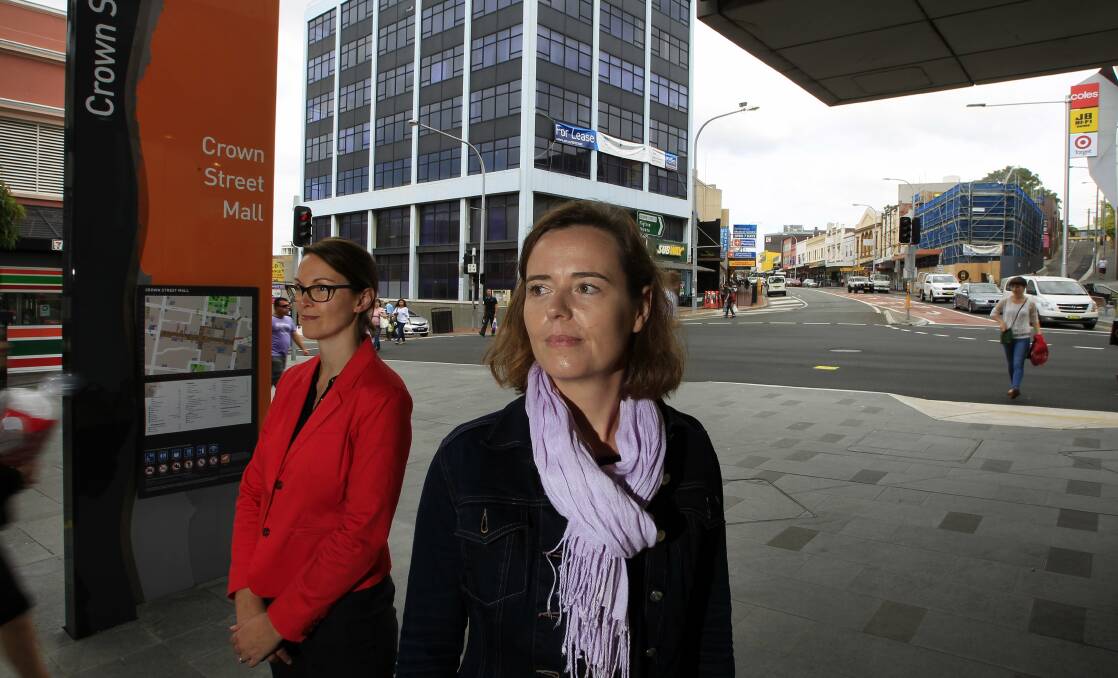
Wollongong's sparkling foreshore is often considered the city's greatest attraction, while the neglected urban strip along west Crown Street has long been considered a place to avoid.
Subscribe now for unlimited access.
$0/
(min cost $0)
or signup to continue reading
But new data collected through a Wollongong City Council public space study paints a very different picture of where residents like to spend their time.
Outside the mall, west Crown Street is the city's busiest pedestrian thoroughfare with more than 7800 daily passers-by, while the numbers walking between the city and the sea (fewer than 2000 daily) is woefully low.
"It's like there's a missing link, or a wasteland zone," Danish urban planner Henriette Vamberg, who has been leading the council's study, said.
"The numbers of people walking to the foreshore were collected on a day with pleasant weather and where the beach was active, but very few people actually choose to walk there."
Ms Vamberg's Copenhagen firm, Gehl Architects - which has worked in cities like New York and Melbourne - has been hired by the council over the past eight months to count and measure how people act in Wollongong.
"In cities we've always been focused on transport numbers, so we have a lot of information about cars, peak hours, where they drive, where buses go," Ms Vamberg said.
"But there's very little information about how many people actually walk on foot."
This week, the council released its first set of data, collected since March, and revealed some interesting lessons about how Wollongong pedestrians behave.
For instance, people are more likely to hang around the train station than the arts precinct, and on weekends avoid Burelli Street but flock to Globe Lane.
The data also revealed Wollongong's activity peaks in the middle of the day and then steadily declines into the evening, a trend strategic project officer Bridget Jarvis said the council was hoping to change.
"There are some spaces - like Globe Lane - where we do achieve the multiple peaks during the day and into the evening and that's a sign that a place is inviting for people at different times," she said.
The council will repeat its pedestrian count early next year before developing a set of recommendations designed to make the city more liveable.
What Wollongong City Council’s Public Spaces Public Life study reveals about the city’s pedestrians:
■ Crown Street Mall hosts the highest foot traffic in the city
■ Foot traffic declines 63per cent along Burelli Street on a weekend
■ More people were recorded around the railway station than the arts precinct
■ Globe Lane is visited by 36per cent more pedestrians on a weekend
■ Corrimal Street acts as a barrier to the foreshore with 16,500 vehicles using it daily

